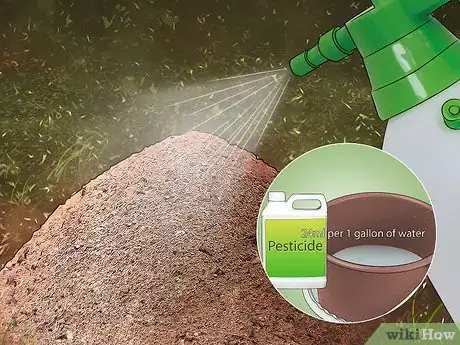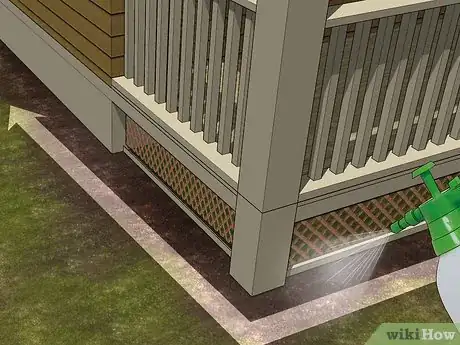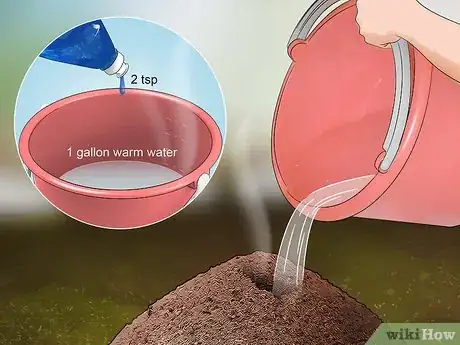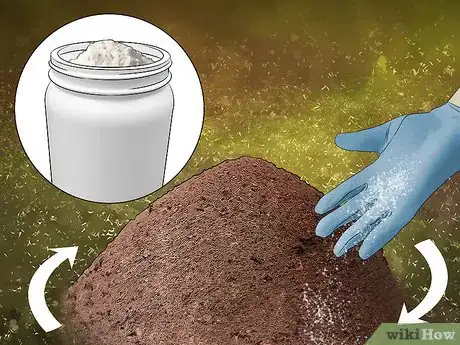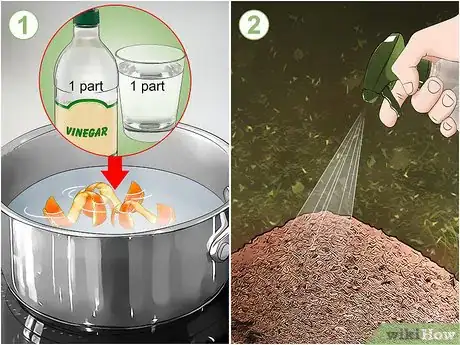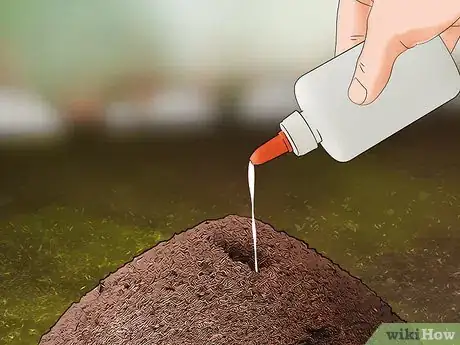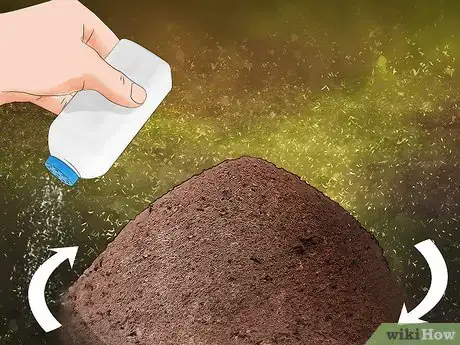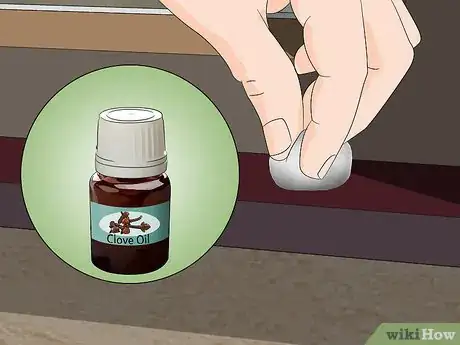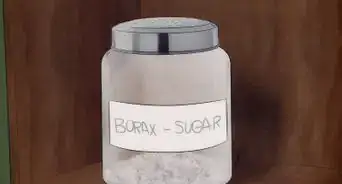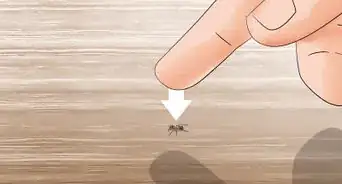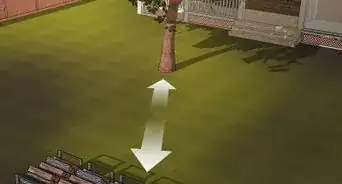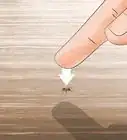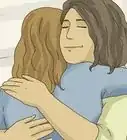This article was co-authored by Kevin Carrillo and by wikiHow staff writer, Hunter Rising. Kevin Carrillo is a Pest Control Specialist and the Senior Project Manager for MMPC, a pest control service and certified Minority-owned Business Enterprise (MBE) based in the New York City area. MMPC is certified by the industry’s leading codes and practices, including the National Pest Management Association (NPMA), QualityPro, GreenPro, and The New York Pest Management Association (NYPMA). MMPC's work has been featured in CNN, NPR, and ABC News.
There are 9 references cited in this article, which can be found at the bottom of the page.
wikiHow marks an article as reader-approved once it receives enough positive feedback. This article received 13 testimonials and 80% of readers who voted found it helpful, earning it our reader-approved status.
This article has been viewed 849,921 times.
A small number of ants located outdoors will not typically pose many problems, but when a massive infestation occurs or when the ants begin to sneak their way indoors, you will need to head outside and kill the colony at its base. Using either chemical pesticides or common household materials, you can get rid of an entire colony in a small amount of time!
Steps
Using Pesticides
-
1Spray a non-repellent spray on the nest to kill ants at the source. Mix 0.8 fluid ounces (24 mL) of the pesticide per 1 gallon (3.8 L) of water in a pump sprayer and cover each anthill in your yard. It may not kill the ants right away, but they should be mostly controlled within 1 week. Non-repellent pesticides create a barrier that ants pass through so that they bring the poison back to the nest.[1]
- Pay attention to where ants are coming from in your yard. They could be near your house, along a fence, or in the cracks of your pavement. Look for small mounds of dirt to find the ant nests.
- Limit spreading pesticides to every 6 months.
-
2Apply the pesticide around your home to stop them from coming inside. Use a non-repellent pesticide in a garden sprayer. Hold the tip of the garden sprayer 6 inches (15 cm) above the ground and spray in the corner and 1 foot (0.30 m) up onto your foundation. Spray around wire boxes, pipe connections, and any other areas you may have noticed ants entering and exiting your home.[2]
- Spray around windows and door frames as well.
- Apply the pesticides on a day when it isn’t windy so they do not blow away from the area you’re targeting.
Advertisement -
3Spread granular pesticide across your lawn for larger infestations. Granular pesticides contain poison and the ants will carry it deep into their nest thinking that it’s food. Pour the bag of granular pesticide into a garden spreader and walk it across your lawn. The spreader will throw the pesticide across your lawn for maximum coverage.[3]
- Some bags of granular pesticides have built-in shakers so you can spread it in concentrated areas.
- Keep pets and children inside for at least 1 hour so the pesticide has a chance to dry.
- Mow your lawn right before you spread the pesticide so it reaches the ground.
-
4Use bait traps near your home for hands-off pest control. Place the bait traps where you notice ants entering or exiting your home. Bait traps have granules that attract ants and contain poison that will kill ants as it’s digested. After 1 month, dispose of your old traps.[4]
- Some bait traps have a strong-scented liquid to attract ants and will trap them inside.
- These may take a few weeks to notice results.
- Bait traps can be purchased at your local home and garden store.
Killing Ants with Natural Substitutes
-
1Pour soapy water into the anthill for a safe solution. Mix 1 to 2 teaspoons (4.9 to 9.9 mL) of mild liquid dish soap with 1 gallon (3.8 L) of warm water. Slowly pour the water into each ant nest in your yard. The heat along with the soap will kill the ants and prevent them from escaping their nests.[5]
- Pour the solution into a spray bottle for a more controlled method of dispersing the water.
- Pour the water into the nest in the early morning or late at night when most of the ants are inside.
- Boiling or hot water could damage nearby plants, so use caution when pouring around plants you want to keep.
-
2Spray boric acid onto the nests to kill them within a few days. Use either diluted liquid boric acid or a powdered boric acid mixed with warm water. Use 3 tablespoons (44 ml) of boric acid with 1 cup (201 g) of sugar mixed with 3 cups (710 ml) of warm water to create a sweet mixture that attracts the ants. Pour the mixture into a spray bottle and spray the nests along with any ant trails you notice in your yard or around your home. Within the next couple days, you’ll notice results.[6]
- Boric acid is toxic to humans and animals if ingested, inhaled, or absorbed through the skin. Never use it in an area where you prepare food, and wear gloves and a face mask to protect yourself while using it.
- Rinse away any excess boric acid to clean it from the area.
-
3Sprinkle diatomaceous earth around the anthill to dry out the infestation. Use horticultural diatomaceous earth (DE) so it doesn’t kill your plants. Spread the DE around the ant nests as well as any trails you may notice in your yard. For preventative measures, sprinkle it around the perimeter of your house to keep ants outside.
- Diatomaceous earth dries the liquids inside the ants and will kill them within a few days or weeks.
- Wear a dust mask so you don’t inhale the DE while you spread it.
- DE is safe to keep in your yard around children and pets.
-
4Make a repellent spray with orange peels and vinegar to steer ants away. Mix equal parts of water and vinegar in a pot and drop 2 to 3 orange peels in. Bring the mixture to a boil on the stove before turning the heat off. Let the orange peels steep in the water overnight before transferring the mixture to a spray bottle. Shake the bottle to mix the solution and spray the nests with it.[7]
- This method drives ants away rather than killing them.
- Use a blender to combine the orange peel with the water and vinegar to make a thicker solution that may kill some ants on contact.
-
5Pour glue directly into the anthill to plug up the opening. Squeeze a bottle white school glue into the ant nests to clog the hole and fill the nest. The glue will kill many of the ants that get stuck inside, but it will push any of the surviving ants to a new nest.[8]
-
6Sprinkle baby powder around the nests to keep ants away from an area. Ants tend to steer clear of talc products, especially ones like baby powder that have a powerful scent. Spread the baby powder around the nests and use a funnel to it directly inside.[9]
- Use baby powder around the perimeter of your house to keep ants out.
-
7Rub essential oils on any points of entry to keep ants out. Use clove or citrus oils to kill ants and prevent more ants from coming inside. Use a soaked cotton ball to apply the oil around areas where ants could enter your home. Repeat the process every 3 days until you don’t notice ants anymore.[10]
- Dilute 15 drops of the essential oil in 1⁄2 cup (120 ml) of water in a spray bottle and apply the solution directly on the ant nest for more direct contact.
Expert Q&A
Did you know you can get premium answers for this article?
Unlock premium answers by supporting wikiHow
-
QuestionWhat is the best ant killer for outside?
 Kevin CarrilloKevin Carrillo is a Pest Control Specialist and the Senior Project Manager for MMPC, a pest control service and certified Minority-owned Business Enterprise (MBE) based in the New York City area. MMPC is certified by the industry’s leading codes and practices, including the National Pest Management Association (NPMA), QualityPro, GreenPro, and The New York Pest Management Association (NYPMA). MMPC's work has been featured in CNN, NPR, and ABC News.
Kevin CarrilloKevin Carrillo is a Pest Control Specialist and the Senior Project Manager for MMPC, a pest control service and certified Minority-owned Business Enterprise (MBE) based in the New York City area. MMPC is certified by the industry’s leading codes and practices, including the National Pest Management Association (NPMA), QualityPro, GreenPro, and The New York Pest Management Association (NYPMA). MMPC's work has been featured in CNN, NPR, and ABC News.
MMPC, Pest Control Specialist Match the pesticide you use to the species of ant. There are 25 species of ants in the US, and one pesticide won't work best for all of them. Get a good look at one of the ants and do a quick Google search to see what it is. If you can't figure it out, you might want to try getting a professional exterminator to come out to get the job done.
Match the pesticide you use to the species of ant. There are 25 species of ants in the US, and one pesticide won't work best for all of them. Get a good look at one of the ants and do a quick Google search to see what it is. If you can't figure it out, you might want to try getting a professional exterminator to come out to get the job done. -
QuestionWhat can I spray for ants outside?
 Kevin CarrilloKevin Carrillo is a Pest Control Specialist and the Senior Project Manager for MMPC, a pest control service and certified Minority-owned Business Enterprise (MBE) based in the New York City area. MMPC is certified by the industry’s leading codes and practices, including the National Pest Management Association (NPMA), QualityPro, GreenPro, and The New York Pest Management Association (NYPMA). MMPC's work has been featured in CNN, NPR, and ABC News.
Kevin CarrilloKevin Carrillo is a Pest Control Specialist and the Senior Project Manager for MMPC, a pest control service and certified Minority-owned Business Enterprise (MBE) based in the New York City area. MMPC is certified by the industry’s leading codes and practices, including the National Pest Management Association (NPMA), QualityPro, GreenPro, and The New York Pest Management Association (NYPMA). MMPC's work has been featured in CNN, NPR, and ABC News.
MMPC, Pest Control Specialist
-
QuestionHow do you get rid of ants?
 Kevin CarrilloKevin Carrillo is a Pest Control Specialist and the Senior Project Manager for MMPC, a pest control service and certified Minority-owned Business Enterprise (MBE) based in the New York City area. MMPC is certified by the industry’s leading codes and practices, including the National Pest Management Association (NPMA), QualityPro, GreenPro, and The New York Pest Management Association (NYPMA). MMPC's work has been featured in CNN, NPR, and ABC News.
Kevin CarrilloKevin Carrillo is a Pest Control Specialist and the Senior Project Manager for MMPC, a pest control service and certified Minority-owned Business Enterprise (MBE) based in the New York City area. MMPC is certified by the industry’s leading codes and practices, including the National Pest Management Association (NPMA), QualityPro, GreenPro, and The New York Pest Management Association (NYPMA). MMPC's work has been featured in CNN, NPR, and ABC News.
MMPC, Pest Control Specialist To get rid of ants, you need to find and eradicate the nest. The problem with ants is that there are usually several hundred or several thousand more of them than what you're seeing. After you take care of any visible clusters of ants, make sure to apply your pesticide in other places around the area and near any entrances to your home in order to repel and kill any others that managed to survive.
To get rid of ants, you need to find and eradicate the nest. The problem with ants is that there are usually several hundred or several thousand more of them than what you're seeing. After you take care of any visible clusters of ants, make sure to apply your pesticide in other places around the area and near any entrances to your home in order to repel and kill any others that managed to survive.
Warnings
- Let pesticides dry for at least 1 hour before letting pets or children in the yard.⧼thumbs_response⧽
- Most ant poisons are toxic to humans and animals, as well, so you should avoid using them in the presence of children or pets. Wear gloves and a face mask to prevent skin contact.⧼thumbs_response⧽
Things You’ll Need
Using Pesticides
- Non-repellent spray
- Pump garden sprayer
- Granular pesticide
- Garden spreader
- Bait traps
Killing Ants with Natural Substitutes
- Spray bottle
- Soapy water
- Boric acid
- Diatomaceous earth
- Orange peels
- Vinegar
- Glue
References
- ↑ https://youtu.be/psrOctkMc5c?t=52s
- ↑ https://youtu.be/psrOctkMc5c?t=59s
- ↑ https://youtu.be/FV86suvPrGY?t=7s
- ↑ https://youtu.be/Hyv4r0gRtVo?t=19s
- ↑ https://youtu.be/iaJkO6SXFAM?t=21s
- ↑ http://www.geniuskitchen.com/recipe/get-rid-of-ants-ants-ants-203233
- ↑ https://www.mommypotamus.com/7-ways-get-rid-ants-naturally/
- ↑ https://www.gardeningknowhow.com/plant-problems/pests/insects/get-rid-of-ants.htm
- ↑ https://tiphero.com/baby-powder-gardening
About This Article
To kill ants outside, first locate the anthill where the ants are coming from. Then, pour boiling water directly into the anthill to kill the colony. Alternatively, mix 4 parts water with 1 part dish soap and pour the mixture in and around any anthills you find. Another option is to spread diatomaceous earth over the surface of your lawn. Diatomaceous earth is a natural pesticide, and ants will die when they come into contact with it. To stop outdoor ants from entering your home, apply a pesticide around the perimeter of your house. Make sure to read the label of the pesticide you choose and take necessary safety precautions before using it/ You can also place bait traps near entrances like doorways and windows. If you encounter ants outdoors, spray them with a mixture of 1 part vinegar and 3 parts water to quickly kill them. To learn how to kill ants outside with pesticides, keep reading!
